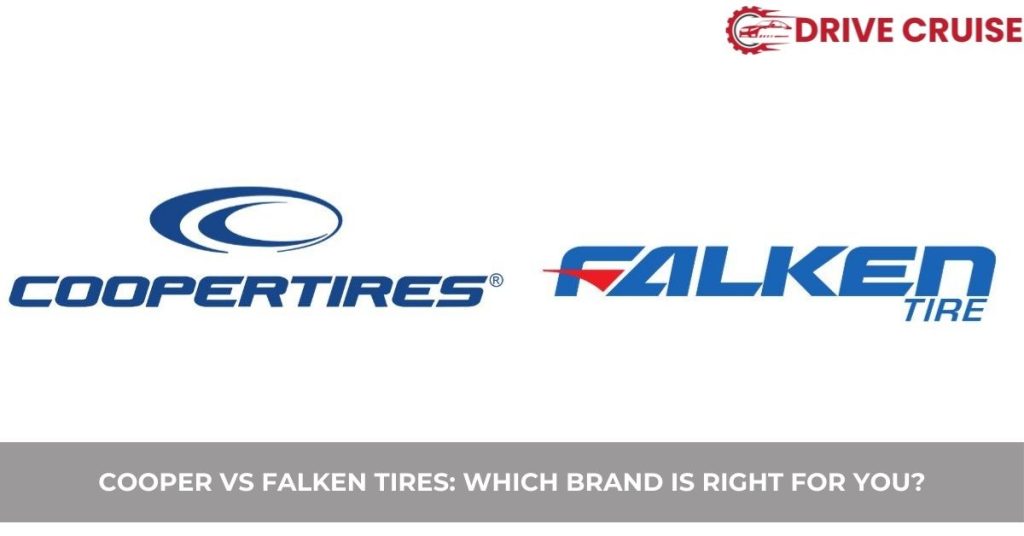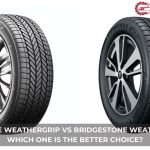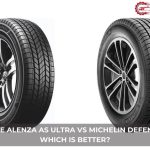When it comes to outfitting our vehicles for the road ahead, choosing the right set of tires is crucial. It’s not just about durability or cost; it’s about trust. That’s why the debate between Cooper and Falken tires has become such a hot topic among drivers. Both brands have their loyalists, and for good reason. They offer a range of options that cater to different needs, whether it’s for a smooth city drive or an adventurous off-road journey.
We’ve all been there, standing in the tire shop, trying to make sense of the myriad options in front of us. Cooper and Falken stand out for their quality and performance, but how do they really stack up against each other? Let’s dive into the world of tires, comparing these two giants on what matters most to us: safety, durability, and value for money. It’s time to see which tire truly deserves a spot on our vehicles.
Understanding Tire Technology
In delving deeper into the Cooper vs Falken tires debate, it’s crucial to unpack the tire technology both brands utilize. This knowledge not only aids in making an informed decision but also highlights each brand’s commitment to safety, durability, and performance.
Compound and Tread Design
Firstly, let’s talk about the rubber compound and tread design, both of which play significant roles in a tire’s performance. Cooper tires often utilize an advanced silica-rich rubber compound that enhances traction, especially in wet conditions. Similarly, Falken tires focus on a specialized compound tailored for different climates, ensuring reliable performance whether it’s hot, cold, wet, or dry.
The tread design is another area where both brands shine, with Cooper offering innovative tread patterns that aim for an even wear and excellent water evacuation. Falken, on the other hand, uses aggressive tread designs intended not just for water displacement but also for maximum grip during high-speed maneuvers.
Sidewall Technology
When it comes to sidewall technology, both brands offer unique features aimed at improving ride quality and durability. Falken tires often come with a secondary bead apex that provides additional sidewall support, enhancing handling response. Cooper’s sidewalls are designed with durability in mind, featuring protection against cuts and abrasions, which ensures longevity in rugged terrains.
Advanced Technologies
Lastly, both Cooper and Falken invest heavily in advanced tire technologies. Cooper’s Wear Square indicator is a visible tool that helps owners gauge the wear and tear on their tires, indicating when it’s time for a replacement. Falken introduces the 3D Canyon sipe technology in some of its models, increasing edges for ice braking while maintaining block stiffness for handling.
By understanding the technology behind these tires, we can appreciate the nuances that make Cooper and Falken stand out in the automotive industry. Both brands bring their unique strengths to the table, catering to a wide range of driving needs and preferences.
Performance on the Road
Building on the foundation of tire technology discussed earlier, assessing how Cooper and Falken tires perform out in the real world brings us to the heart of what drivers care most about: the experience behind the wheel. Both Cooper and Falken have carved out reputations for producing tires that meet a variety of driving needs, but the nuances in their performance characteristics on the road set them apart.
Cooper tires, known for their silica-rich compounds, offer exceptional grip and road-holding capabilities on dry surfaces. The enhanced traction doesn’t end there; their innovative tread patterns are specifically designed to channel water effectively, reducing the risk of hydroplaning in wet conditions and ensuring a stable and safe driving experience. Furthermore, Cooper’s focus on even wear contributes to a smoother ride over the life of the tire, a testament to the brand’s commitment to durability and overall driving satisfaction.
On the other hand, Falken excels with its specialized compounds tailored for different climates, including hot summers and cold winters. This adaptability means Falken tires maintain flexibility and grip across a broader range of temperatures. Their aggressive tread designs come into play, particularly in challenging terrains and during spirited driving sessions, offering drivers confidence-inspiring grip and responsiveness. Falken’s attention to sidewall support enhances handling, ensuring drivers feel connected to the driving surface, whether navigating tight corners or cruising on highways.
Both Cooper and Falken invest significantly in technologies that improve safety and performance. Cooper’s Wear Square indicator, for example, allows drivers to quickly check the condition of their tires, ensuring they’re always prepared for the road ahead. Meanwhile, Falken’s 3D Canyon sipe technology not only aids in winter traction but also contributes to stability in dry conditions, rounding out its performance capabilities.
While both brands deliver exceptional performance, the choice between Cooper and Falken tires might come down to specific driving preferences and the conditions most often encountered. Whether prioritizing all-weather flexibility, comfort, and handling or emphasizing rugged durability and cutting-edge safety features, drivers will find that both brands offer compelling options tailored to a wide array of performance on the road.
Durability and Longevity
Translating our focus to the durability and longevity of Cooper versus Falken tires, it’s evident that both brands excel, yet in marginally different ways. Cooper tires are renowned for their long-lasting tread life, a direct result of their silica-rich compounds coupled with innovative tread patterns. These features contribute to a slower rate of wear, allowing us to enjoy our Cooper tires over numerous miles with consistent performance.
On the other hand, Falken tires boast a robust construction using specialized compounds that withstand various driving conditions, from scorching highways to icy roads. Falken’s aggressive tread designs not only provide excellent grip but also contribute to the tire’s longevity, even under hard driving conditions.
Both brands offer unique technologies aimed at extending the lifespan of their tires. Cooper’s Wear Square indicator, for instance, gives us a clear visual representation of the tire’s wear, enabling easier assessment for replacements. Similarly, Falken’s 3D Canyon sipe technology increases edge effects for better grip, significantly contributing to even wear despite aggressive driving styles.
Ultimately, the choice between Cooper and Falken in terms of durability and longevity hinges on our driving habits and conditions. Cooper tires may offer a longer tread life for those of us on lengthy commutes on well-paved roads. Meanwhile, Falken tires could prove more durable for drivers facing diverse, often harsh, driving conditions. Both brands stand as reliable options, designed to deliver miles of performance and safety, reflecting their commitment to quality and durability in tire manufacturing.
Price Comparison
After examining the performance and durability of Cooper and Falken tires, we dive into the crucial aspect of price, which often influences final purchasing decisions. Tires from both brands come in a wide range of prices, depending on factors such as size, type, and technology implemented. Generally speaking, Cooper tires tend to offer an appealing price point that suits budget-conscious drivers without sacrificing quality. For example, Cooper’s standard passenger car tires might start at a lower entry price compared to Falken’s equivalent models.
On the other hand, Falken tires, known for specialized compounds and aggressive tread designs, can carry a slightly higher price tag. This is especially true for premium or specialty tires, including those designed for rugged off-road performance or high-speed sports driving. Falken’s focus on advanced technology and materials, such as their proprietary 3D Canyon sipe technology, justifies the extra cost for drivers seeking top-tier performance in specific driving conditions.
To provide context, consider the following examples: A mid-range Cooper all-season tire for a passenger vehicle may cost significantly less than Falken’s comparable all-season option that boasts enhanced performance features. However, when comparing high-performance or specialty tires designed for specific terrains or seasons, the price disparity narrows, and Falken’s prices become highly competitive, reflecting the advanced technology and performance benefits they offer.
Ultimately, the choice between Cooper and Falken tires on a price basis depends on individual needs and preferences. Drivers prioritizing budget-friendly options with reliable performance might lean towards Cooper, while those valuing advanced technology and specialized performance benefits may find Falken’s higher price point justified. Regardless of the choice, both brands deliver value, marrying cost with quality, technology, and performance in a way that meets a wide range of driver expectations and needs.
Customer Satisfaction and Reviews
Following our analysis of the technical aspects, pricing, and performance features of Cooper and Falken tires, we dive into what arguably seals the deal for many drivers: customer satisfaction and reviews. These insights offer a window into real-world experiences, shedding light on how these tires truly perform outside of controlled tests and marketing materials.
First up, Cooper tires receive high marks for their longevity and comfort, with many drivers praising the smooth ride and durable performance even after thousands of miles. The Cooper CS5 Ultra Touring, for instance, consistently earns accolades for its impressive tread life and all-season capabilities. Buyers also frequently highlight the cost-effectiveness of Cooper tires, reaffirming their reputation for offering quality at an accessible price point.
On the other hand, Falken tires, particularly models like the Falken Azenis FK510, garner strong feedback for their exceptional handling and traction, especially under wet conditions. Users often note the responsive steering and stability that Falken tires provide, contributing to a sense of safety and confidence on the road. The trade-off for these high-performance features appears in some reviews mentioning their relatively higher price, but many argue the cost is justified by the tires’ superior performance and technology.
An interesting point of comparison comes from the warranty and customer service experiences. Cooper tires tend to come with competitive warranty offerings, with many customers expressing satisfaction with Cooper’s customer service. Falken also offers robust warranties, but reviews are mixed, with some drivers reporting excellent service and others citing room for improvement.
Ultimately, choosing between Cooper and Falken tires hinges on prioritizing factors like budget, performance, and the type of driving you do. Both brands boast dedicated customer bases, with reviews and testimonials reflecting a high degree of satisfaction across a broad spectrum of needs and preferences.
Conclusion
We’ve explored the nuances between Cooper and Falken tires, weighing their technologies, performance, and value. Whether you’re drawn to Cooper’s cost-effective durability or Falken’s premium handling in challenging conditions, it’s clear both brands have their merits. Remember, the best choice for you hinges on your specific needs and driving habits. Happy motoring!
Related Posts:







